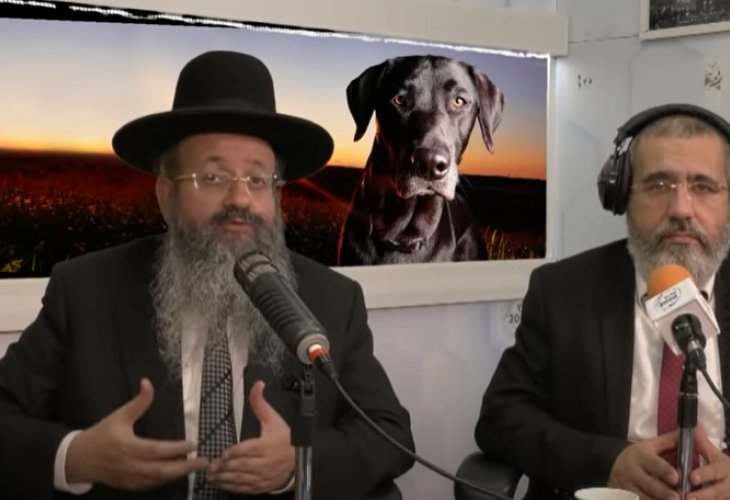The Enigmatic Genius: Rabbi Shoshani's Unrevealed Legacy
Was he Hillel Lieberman or Mordechai Rosenbaum? Dive into the mystifying tale of the man who captivated the great Rabbis of Lubavitch and Satmar as well as prominent Muslim scholars, yet remained shrouded in mystery.


Years: 1895-1968. Places: France, Brisk, Mea She'arim, Morocco, Uruguay
Rabbi Shoshani, as he called himself, was an enigmatic figure revered among the scholars of the last generation. He was a master of Torah secrets, memorizing the entire Babylonian and Jerusalem Talmuds, Shulchan Aruch, and its commentaries, with expertise beyond religious texts. His vast knowledge stunned everyone he encountered.
During a meeting with the Rebbe of Satmar in Paris, Shoshani engaged in vibrant discussions about all Torah subjects, to the astonishment of the Rebbe, who wondered when Shoshani had the time to read all the books he quoted so precisely, covering revealed and mystical, Hassidic and philosophical, early and late works.
Yet, no one truly knows his real name, or where and when he was born. Appearing suddenly in France, he traveled from place to place and passed away in a remote location, his mystery partially intact.
He was reportedly born around 1895, with legends of his phenomenal memory stirring from childhood, where his abilities were showcased by his parents. Through his life, he journeyed between Israel, Europe, and the United States, briefly residing in Morocco.
In 1942, he was captured in Nazi-occupied Paris without documentation. The Gestapo suspected him of being Jewish due to his circumcision, yet he claimed to be Muslim, prompting the chief mufti of France to interrogate him. After five hours, the mufti emerged, demanding Shoshani’s release, declaring him a Muslim genius...
In France, he occasionally stayed with Rabbi Moshe Schwaber, one of the elders from Beit Vagan, who vividly recalls Shoshani: "He wore shabby clothes and lived simply, but his genius and personality were extraordinary. His lectures drew hundreds. The Lubavitcher Rebbe, of blessed memory, was in contact with him in Paris. Had he been part of the mainstream, he would have been one of the most famous Jewish leaders, but he chose solitude and was also very original in his thinking."
Among his students were French Jewish writers and philosophers who grew closer to Judaism through him. Witnesses in Strasbourg speak of his method to learn French: locking himself in a hotel room with a dictionary for two weeks, after which he spoke fluent French. He also taught mathematics and physics to doctors and university professors.
He preferred eating alone in his room. Shoshani lived off savings, the origins of which remained unknown. He claimed that in the 1920s, he became wealthy through the New York Stock Exchange, only to lose it all by the 1930s.
It is said that he studied Gemara, wrapped in a tallit and tefillin. On Yom Kippur, he was seen barefoot in the city streets; entering a Sephardic synagogue, he declined a prayer book, reciting all the prayers by heart with the congregation. Eventually, he moved to South America, where he passed away. According to his students, he taught Gemara classes without books, quoting texts with all their commentaries verbatim.
"Mr. Shoshani taught from memory," says Rabbi Schwaber, "but left behind notebooks. I've seen them, but they are difficult to decipher due to their cryptic and often terse nature."
Holocaust survivor and author Elie Wiesel, who knew Shoshani, suggests his real name was Mordechai Rosenbaum, meaning lily in Hebrew, and indeed Shoshani used a fake Moroccan birth certificate under the name "Mordechai ben Shoshan." Others argue that "Shoshani" wasn’t a play on his surname but a reference to Mordechai from Susa. Rabbi Schwaber offers a different tale: "In Jerusalem, I met a woman who claimed he was her nephew, Hillel Lieberman, born in Brisk."
Lieberman supposedly studied at the Meah Shearim Yeshiva, later attending Rabbi Kook’s yeshiva in Jaffa before traveling to the US and embarking on his worldwide wanderings.
Towards the end of his life, he was in Uruguay, invited to lecture teachers on Shabbat. On that Shabbat of January 28, 1968, he passed away. In his pocket was a note with a Swiss telephone number of an acquaintance. His students hoped this contact could solve his mystery, only to learn that the person had died just 24 hours earlier in Switzerland, leaving Shoshani’s enigmatic life unanswered even after his death.
His gravestone reveals little: "Rabbi and Sage Shoshani, of blessed memory. His birth and life remain an enigma. Passed away on the holy Shabbat, January 28, 1968."

